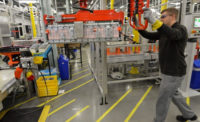New battery plants are popping up like wild flowers all over North America, as automakers embark on one of their biggest building sprees ever, fueled by the multibillion dollar transition to electric vehicles. Legacy OEMs and start-ups are partnering with lithium-ion battery manufacturers such as AESC, LG Energy Solution Ltd., Panasonic, Samsung SDI and SK On.
LG Energy Solution alone plans to build eight factories in Arizona, Georgia, Michigan, Ohio, Tennessee and Ontario that will supply General Motors, Honda, Hyundai and Stellantis. Those facilities, which will account for more than 300 gigawatt-hours of EV production capacity, will be massive plants that each comprise several million square feet of floor space.
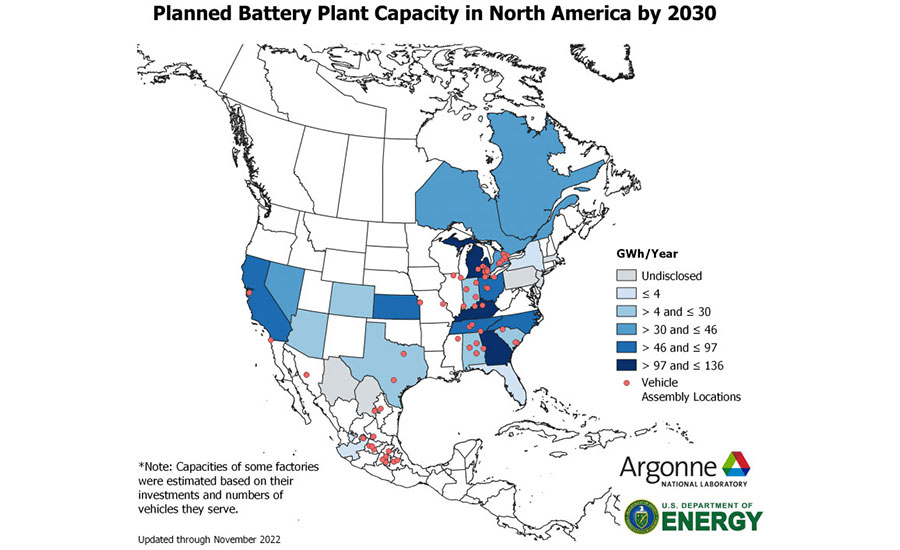
Numerous EV battery plants will be built in North America during the next decade. Illustration courtesy Argonne National Laboratory
Battery factories require a new way of thinking about plant design and construction. Manufacturing engineers must pay careful attention to factors such as production flow, material handling, environmental control and fire safety.
Factories that mass-produce battery cells, modules and packs demand a different layout than traditional automotive facilities. For instance, they require multilevel mixing buildings that use gravity-fed production processes to transform raw materials into anodes and cathodes. Clean rooms are essential, and humidity control is extremely important. Battery facilities also typically require two to three times the electrical load of a conventional automotive assembly plant.
The unprecedented demand for EVs has triggered the rapid expansion of battery manufacturing facilities. Automakers and suppliers are investing billions of dollars in mega-plants that each span 3 to 4 million square feet and require 100 to 130 megawatts of power.
Engineers face many unique design and construction considerations. In fact, there are four major challenges that go hand in hand with the complexities of establishing an EV battery manufacturing facility:
- Highly aggressive schedules.
- Multinational global teams.
- Budget and cost control.
- Unique quality issues.
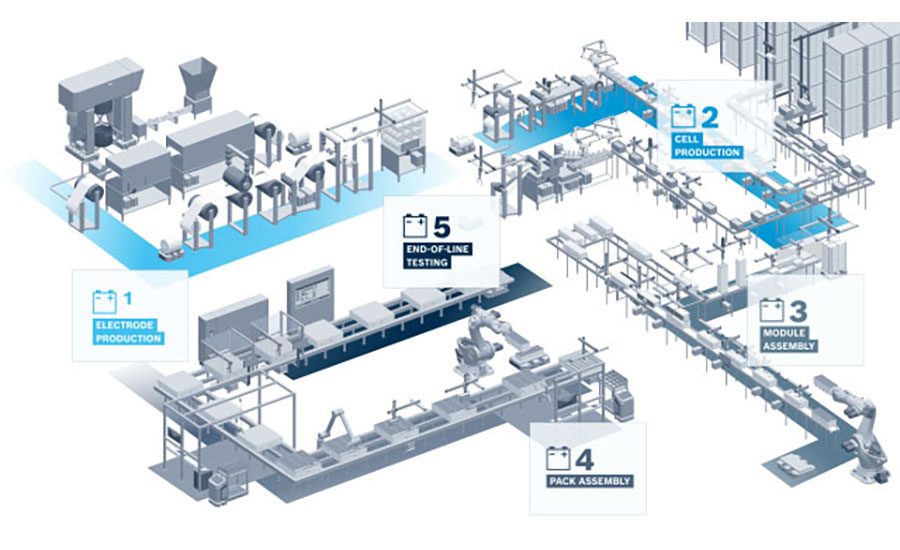
Battery factories require a new way of thinking about plant design and construction. Illustration courtesy Bosch Rexroth Corp.
Highly Aggressive Schedules
Achieving speed to market with an EV battery manufacturing facility is critical. To meet these demands, project teams must use a fast-tracked design, construction and equipment installation schedule consisting of overlapping and simultaneous tasks throughout the project. Early planning is imperative.
Your plan should be comprehensive from beginning to end. At the start, one of the first critical decisions is identifying the optimal site. Not finding the right site is a perfect recipe for derailing a project at the beginning.
If you pick the wrong site, your team will be fighting this decision through design, construction, startup and operation. Take the time to do a technical evaluation of the site, including permitting requirements, utility availability, topography and soil conditions, as well as the current and future labor force before you close on the property. Do not be seduced by the “best” financial incentives.
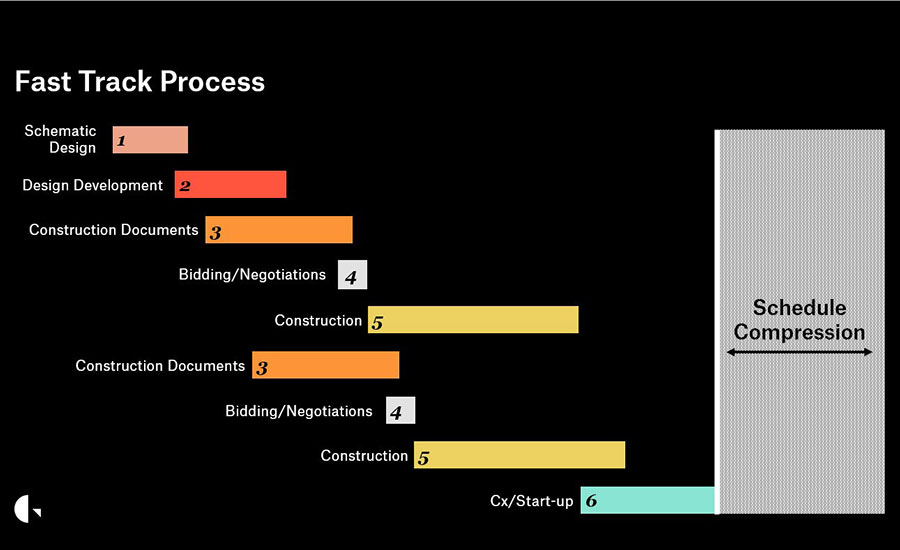
Project teams must use a fast-tracked design, construction and equipment installation schedule consisting of overlapping and simultaneous tasks. Illustration courtesy Gresham Smith
Moving to the other end of the schedule, since EV battery manufacturing facilities require an extraordinary amount of specialized equipment that will be installed in phases, planning ahead for installation is also critical.
The first production line is usually installed to meet the extremely important sample production date. This means subsequent lines will be installed while product is being produced in a dry, ultra-low relative humidity (less than 1 percent) and clean environment.
This phased approach cannot be successfully accomplished without a well-developed installation plan from your design, construction and operation team.
Time and time again, it has been proven that a good plan will overcome poor execution. However, great execution will rarely overcome a poor plan. So, take time and move slowly at the beginning of your project. That will allow you to move much faster in future phases.
Finally, remember that no plan survives first contact with a project. In other words, your plans are going to change. Therefore, flexibility should be built into your team’s thinking, as well as your project plan, to quickly adapt.
Multinational Global Teams
Many battery manufacturers are based in China, Japan and other Southeast Asian countries. Your project team will be multinational, multilingual and multicultural, working from multiple time zones. Fostering effective collaboration among your team members and cultivating those relationships is crucial when working with a global team.
These are the people you will be spending the next four to five years with through the design, construction, commissioning, startup and operation of your facility. Therefore, it is essential to make the time and effort to pick the right team members with the necessary combination of experience, expertise and attitude who can work well together as part of a global team.
It is also vital that you are prepared to create and maintain a collaborative culture. Fortunately, we now have excellent collaboration tools for teams that are spread across the globe, such as:
- Video calls. Turn your camera on. Whether it’s Microsoft Teams, Zoom or some other meeting platform, calls are important in bridging the language gap. When you see someone, even if you are not speaking the same language or if there is a translator, you can watch their body language, which is extremely valuable.
- 3D graphics. Never underestimate the value of graphics. A picture is worth a million words when you are trying to communicate across language barriers.
- Cloud-based services. Document storage and version control is always a challenge on a project. Fortunately, we now have the ability to use cloud-based document management websites for collaborative projects.
Make the investment to become very comfortable with these tools and build in extra time for meetings. This is crucial, since bilingual and bicultural technical meetings will take at least twice as long as you would normally expect.
Budget and Cost
Electric vehicle battery plants are expensive. To effectively control both first- and long-term costs, it’s a good idea to focus on total ownership cost (TOC), which includes site, design, construction and operating costs.
Once you understand the entire cost and where the big money is—for example, the facility’s mechanical and electrical systems—you can start to drive down that cost. Saving a nickel here and a dime there while dollars are flying out the door is simply not the right way to approach such a complex endeavor.
Good early planning will also drive down TOC. While you can control cost at the beginning of a project as you make fundamental design decisions, once you enter into procurement and construction, you are no longer in a position to effectively save money. In fact, you are going to be spending money very rapidly.
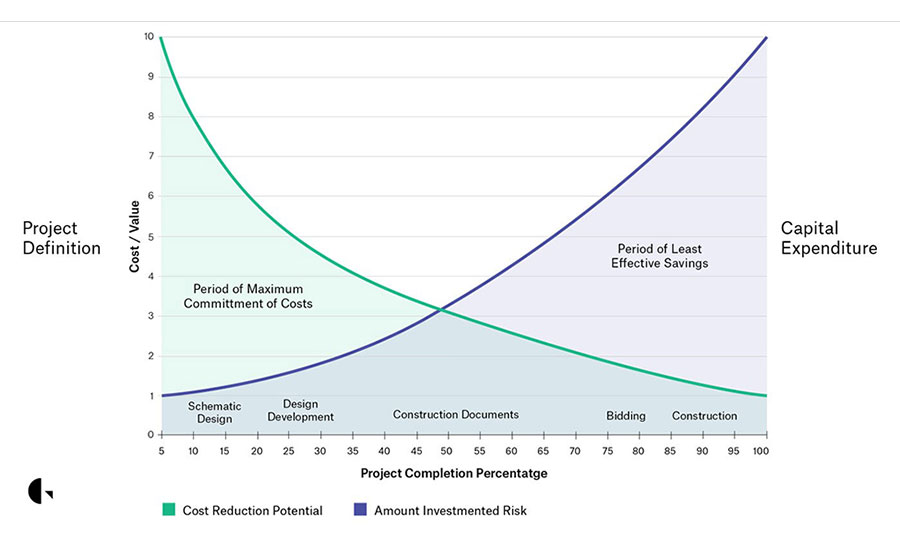
It’s a good idea to focus on total ownership cost, which includes site, design, construction and operating costs. Illustration courtesy Gresham Smith
It is crucial that your team members have a budget target and have the necessary information to track costs and estimate on an ongoing basis. There are many good estimators in the world, but very few who can estimate effectively based on the limited amount of information you have at the early stages of design.
It is critical to have an estimating team that is capable of making rough-order magnitude estimates at the beginning of a project to help drive your early decision making.
Effective decision making is really important when it comes to cost control.
Design and construction is all about decision making. And, your project leadership must have the ability to make good decisions fast. Since an EV battery manufacturing facility often represents a joint venture between an automaker and a supplier, there is another layer of complexity added. Each joint-venture partner will have very different decision-making styles.
If you begin your project without having a clear idea of who is in charge, you’re starting off on the wrong foot and setting yourself up for confusion that will cause schedule delays and will cost money. The bottom line? Effective decision making is really important when it comes to cost control.
Unique Quality Issues
An EV battery manufacturing plant is much different than a traditional automotive assembly plant, because of the high-speed production processes that take place within a highly sensitive environment that needs to be meticulously controlled. Dense with equipment, these facilities must maintain ultra-low humidity and a clean room environment around the clock.
Battery plants are also different from other types of advanced manufacturing. For instance, clean rooms for semiconductor manufacturing are not dry rooms. They contain 30 times more humidity than the ultra-low requirements for battery plants. Uncontrolled humidity in battery plants will cause defects resulting in reduced product life and performance, overheating during charging and potentially thermal runaway, including fires.
Because of the ultra-dry and clean room environment required, you should start with a dry-clean culture mindset from the very beginning. This will pay dividends as you begin to certify the production spaces and install equipment. If done well, it will translate into the ongoing operational culture of your facility.
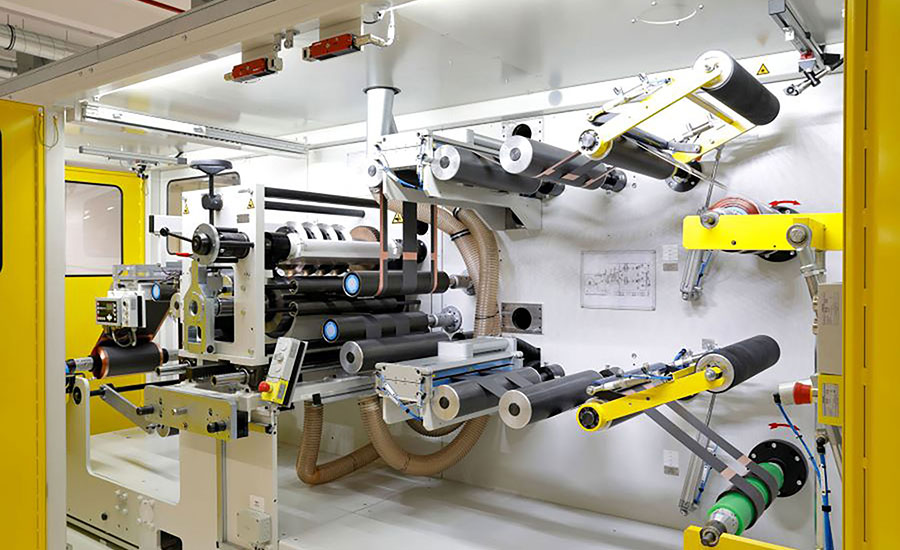
Battery manufacturing requires high-speed production equipment and processes that need to be meticulously controlled. Photo courtesy Volkswagen AG
In addition, you need to focus on training your personnel in how the overall building works as a system and make sure they fully understand its sensitivities. Before the plant is operational, develop a plan for a “soft production landing” in case things go wrong.
For example, your mechanical system will have certain outside temperatures that the system is designed to operate within. But, with increasingly common extreme weather events, it is not a matter of if you are going to get outside of the system design parameters, but a matter of when. Therefore, every EV battery plant needs an operational plan in the event of extreme weather.
That plan should include tracking incoming severe weather systems, closely monitoring your building systems and potentially ceasing production, and—since people are one of the main sources of humidity—pulling all personnel out of the clean and dry rooms until the storm passes.
Redundancy can be expensive. However, spending the time and money to understand where redundancy is prudent—on the front end of a project—can help avert disaster once a plant is operational. The consequences of making a “penny-wise, pound-foolish” decision will cost you five to 10 times more in the future. Ultimately, when you do not take the TOC into consideration up front, you stand to lose millions of dollars further down the line.
Finally, embrace a future-oriented mindset. The EV industry is still relatively new, which means new innovations are being made every day. The plant you are building today will someday need to support battery manufacturing for an entirely different chemistry from what is currently used.
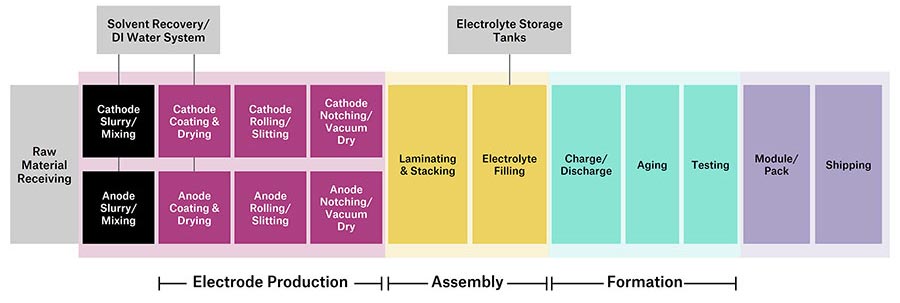
Battery factories should be designed to optimize material flow, maximize productivity and reduce time to market. Illustration courtesy Gresham Smith
Sowing Seeds for Success
To help optimize material flow, maximize productivity and reduce time to market, it’s important to combine what are often individual buildings into a single, larger structure while maintaining appropriate fire separation and life-safety protections. This not only reduces the general site requirement area and the amount of conveyor systems needed, but also reduces the overall construction and operational costs of the project.
Also consider creating a “spine” that runs down the center of the plant. In an EV battery manufacturing facility, there are two separate parallel cathode and anode lines. This separation creates a natural location to include a central spine. This not only provides a circulation path for people and equipment, but also a utility distribution path that cuts down on the distances for all utilities feeding the process, which greatly reduces cost.
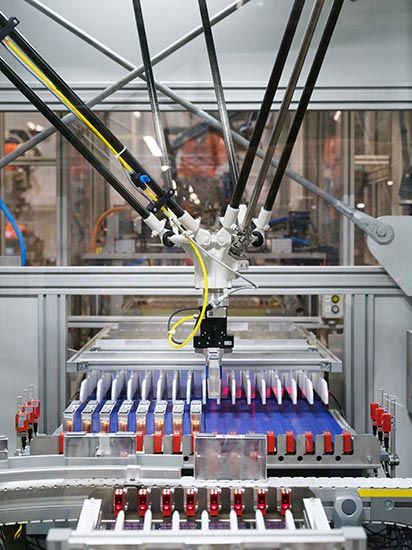
High-speed delta robots are used for battery cell coating applications. Photo courtesy BMW AG
Electric vehicles are driving a once-in-a-century change to our economy through the creation of an entirely new industrial ecosystem that is creating multiple opportunities at multiple scales all over the world. This systemwide change will continue to grow and evolve.
Establishing an EV battery manufacturing facility during this industrial and economic shift poses unique challenges that require careful consideration and strategic thinking. A highly aggressive schedule is crucial for achieving the required speed to market, and it necessitates early planning, comprehensive site evaluation and well-developed equipment installation plans.
Embracing a future-oriented mindset and incorporating innovative design concepts will enhance efficiency, optimize material flow and reduce construction costs. By addressing these challenges proactively, companies can position themselves for success in the rapidly evolving EV battery manufacturing industry.



